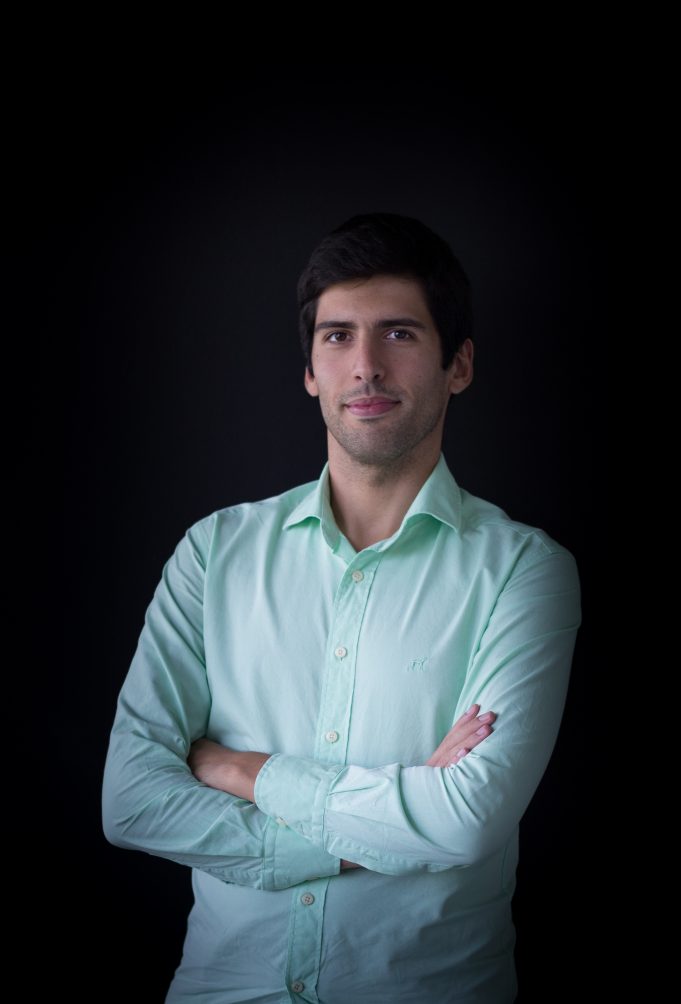
About Wisecrop
- Founders: Sandro Vale, Flávio Ferreira and Miguel Rodas and Tiago Sá
- Founded in: 2014
- Employees: 8
- Money raised: €350.000
- Ultimate goal: to digitalize the entire agrifood industry
The Porto area in northern Portugal is home to many small agricultural farms. Tiago Sá and his three co-founders saw that small-scale farmers were often being shut out of the digital transition. They wanted to do something about that, consequently, in 2014, Wisecrop was born: a platform where all information related to a farm is brought together in one place. “Our mission is to make the digital transition accessible to all farms,” says Wisecrop.
Eight years have now come and gone and Wisecrop is being used by four thousand farmers across Portugal and Spain. Tests are also underway in France and Italy, and the start-up plans to eventually cater to the entire agrifood industry. One step at a time, though. “First of all, we are focusing on the 250,000 farmers in Portugal. The rest will come later,” Sá explains.
What problem is Wisecrop solving?
“Traditionally, farmers are often located some distance away from their crops. We make the connection between the farmer and their crops by creating a platform that enables a farmer to manage the entire farm from one central location. We can provide all types of data that may be important to a farm. Information about the weather (amount of rainfall, humidity) about the soil (temperature, pH, humidity), about the crops themselves (vegetation index, stock growth), about the machinery and vehicle fleet (how fast machinery is capable of operating, expiration dates of certificates), specific characteristics of the environment, and about the harvest. And that’s nowhere near everything.”
How did you come up with the idea?

“We are four friends who met at university. We started with technology that provides farmers with detailed access to their crops with the use of very precise and real-time data. Once we developed that technology, we actually quickly found that the level of the added value that we were offering wasn’t high enough. It’s all very well that a farmer knows that 10 millimeters of rain have fallen and that it’s 9 degrees Celsius, but how does that data affect their crops? We then started looking at ways to process all the data so that we can tell the farmer: ‘Because of this, this and this circumstance, your crop has a high chance of developing a disease; go and deal with that.”
“So, we collect data in a precise, reliable way. We process that information and our agricultural experts then model that into useful and actionable information for the farmer.”
What technology are you using to collect that data?
“All kinds of different technologies. We work with data that is in the public domain. That way, we are able to provide useful information to free users simply based on weather forecasts. For our premium users, we can install sensors on their land, for starters. That makes the data more precise. But, we have very deliberately designed our platform in such a way that everyone stands to benefit from it, even if you are not a paying customer.”
Then we are just talking about crops, but there is much more to running a farm, right?
Absolutely. Your inventory, employees, machinery and vehicle fleet, production costs, and certifications also all need to be managed. Wisecrop brings all those pieces of the puzzle together. Every farm has something that can be done more efficiently. Take water management, for example. By using digital soil moisture probes, up to 35 percent of water can be spared. That will soon save you 200 euros per hectare of land in terms of water bills.”
What is the greatest challenge?

“The mindset. In Portugal, agriculture is generally a fairly old-fashioned sector, farmers are not used to using technology. They see it as an unnecessary luxury, something for the rich. Changing that mindset is tough. We would like to help our users, teach them, and provide them with tools that make it easier to run their business in a successful way. To overcome this challenge, we have simplified our interface so that a user can quickly understand how she/he can use the tool and what they can use it for. That way, users are more open to learning new things as they go along, rather than finding it too complicated from the outset.”
“The fact that the average age of the Portuguese farmer is quite old also has an upside. Namely, it means that it is also the time when the new generation, digital natives, are about to take over from their grandfather or father. They look at the business with fresh eyes and are automatically more open to digitalization and technology.”


